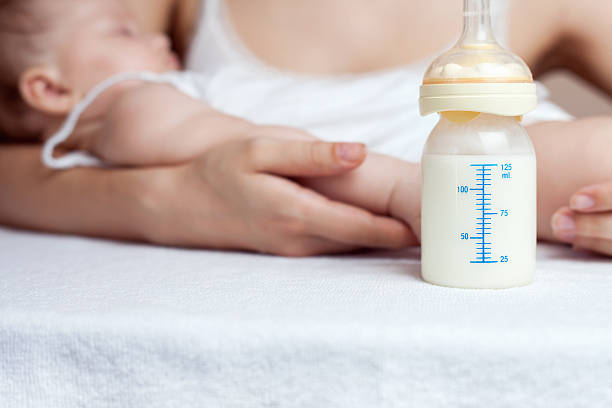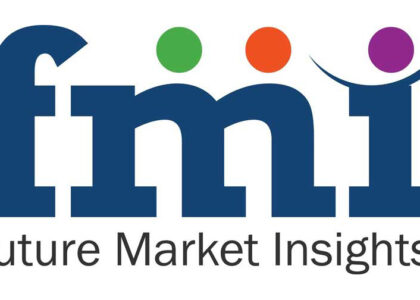The global baby bottle market is estimated to be valued at US$ 3.41 billion in 2023 and is projected to reach a valuation of US$ 5 billion by 2033, advancing at a CAGR of 3.9% over the forecast period. This growth highlights the increasing demand for baby care products, especially baby bottles, which now account for approximately 19% of the overall global baby care market.
Recent innovations in the baby bottle market include the introduction of stainless steel water bottles, glass baby bottles, and silicone baby bottles. These options are gaining popularity due to their ease of cleaning, resistance to retaining formula residues, and chemical inertness, making them a safer and more durable choice for parents.
The market’s growth is largely driven by the increasing number of mothers who face challenges with breastfeeding, prompting a rise in the demand for baby bottles. Additionally, the growing number of working women with busy schedules, coupled with heightened awareness of baby care products, is further fueling market expansion, especially during the first half of the forecast period.
Key Drivers Behind Market Growth
- Rising Awareness of Baby Care Products
Parents today are more informed about the importance of proper baby care, including safe feeding practices. This heightened awareness is driving the demand for high-quality, safe baby bottles made from non-toxic materials such as BPA-free plastics, glass, and silicone. - Growing Birth Rates in Developing Regions
Emerging economies are seeing a surge in birth rates, which is expected to contribute significantly to the increasing sales of baby bottles. Markets in regions like Asia-Pacific and Africa are likely to play a key role in this growth. - Increase in Working Mothers
With a rise in the number of working mothers globally, there is greater reliance on baby bottles for feeding, particularly in situations where breastfeeding might not be feasible. This trend is boosting the baby bottle market. - Technological Advancements in Bottle Design
Innovative baby bottle designs that mimic natural breastfeeding, reduce air ingestion, and offer ease of cleaning are gaining popularity. These advancements are contributing to the market’s sustained growth.
Challenges in the Market
- Environmental Concerns
With increasing environmental awareness, the baby bottle industry is facing pressure to adopt more sustainable and eco-friendly materials. This shift could lead to a greater focus on recyclable and biodegradable options in the near future. - Regulatory Standards
Different regions have varying regulatory requirements for baby bottle materials and designs. Manufacturers need to ensure compliance with safety standards, which may pose challenges in market expansion.
Future Outlook
The baby bottle market is set to witness steady growth as consumer demand for baby care products continues to rise. The market’s projected valuation of US$ 5 billion by 2033 reflects ongoing trends like increased health consciousness among parents and the preference for premium, safe baby bottles. Manufacturers focusing on innovative, eco-friendly, and convenient product offerings are likely to stay ahead in this competitive landscape.
Key Takeaways from the Baby Bottle Market:
- As per FMI, the United States spearheads growth in North America, with an approximate 3.8% CAGR forecasted for the period.
- Baby Bottles in India is anticipated to surge at a 3.6% CAGR over the next ten years.
- Germany is expected to experience robust growth at a CAGR of 3.7% by 2023.
- Future Market Insights projects plastic baby bottles to dominate the material segment with a 4.2% CAGR over the next decade.
- Future Market Insights predicts a 4% CAGR for plastic baby bottles.
Market Segmentation
By Material :
- Plastic Baby Bottles
- Stainless Steel Baby Bottles
- Others
By Capacity :
- Less than 3 oz Baby Bottles
- 3-6 oz Baby Bottles
- 6-9 oz Baby Bottles
- More than 9 oz Baby Bottles
By Price Range :
- High/ Premium Baby Bottles
- Mid-Range/ Economy Baby Bottles
By Sales Channel :
- Wholesalers/ Distributors
- Hypermarkets/ Supermarkets
- Specialty Stores
- Convenience Stores
- Drug & Pharmaceutical Stores
- Online Stores
- Others
By Region :
- North America
- Latin America
- Western Europe
- Eastern Europe
- South Asia and Pacific
- East Asia
- Middle East & Africa
About Future Market Insights (FMI)
Future Market Insights, Inc. (ESOMAR certified, recipient of the Stevie Award, and a member of the Greater New York Chamber of Commerce) offers profound insights into the driving factors that are boosting demand in the market. FMI stands as the leading global provider of market intelligence, advisory services, consulting, and events for the Packaging, Food and Beverage, Consumer Technology, Healthcare, Industrial, and Chemicals markets. With a vast team of over 400 analysts worldwide, FMI provides global, regional, and local expertise on diverse domains and industry trends across more than 110 countries.
Contact FMI:
Future Market Insights Inc.
Christiana Corporate, 200 Continental Drive,
Suite 401, Newark, Delaware – 19713, USA
T: +1-845-579-5705
For Sales Enquiries: sales@futuremarketinsights.com
Website: https://www.futuremarketinsights.com
LinkedIn| Twitter| Blogs | YouTube


